The Mirror
2021 Media Kit is now available. Please email publisher@xtra.co.nz if you require a copy.
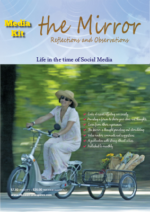
2021 Media Kit is now available. Please email publisher@xtra.co.nz if you require a copy.
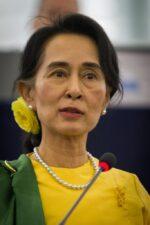
Just before the newly elected members of Myanmar’s parliament were due to be sworn in today, the military detained the country’s de facto leader, Aung San Suu Kyi; the president, Win Myint; and other key figures from the elected ruling party, the National League for Democracy. The military later announced it had taken control of the country for 12 months and declared a state of emergency. This is a coup d’etat, whether the military calls it that or not. A disputed election and claims of fraud In November, the NLD and Suu Kyi won a landslide victory in national elections, with the military-backed Union Solidarity and Development Party (USDP) faring poorly in its key strongholds. Humiliated by the result, the USDP alleged the election was subject to widespread fraud. However, international observers, including the Carter Center, the Asian Network for Free Elections and the European Union’s Election Observation Mission, all declared the elections a success. The EU’s preliminary statement noted that 95% of observers had rated the process “good” or “very good. Yet, taking a page out of former US President Donald Trump’s book, the USDP pressed its claims of fraud despite the absence of any substantial evidence — a move designed to undermine the legitimacy of the elections. The military did not initially back the USDP’s claims, but it has gradually begun to provide the party with more support, with the commander-in-chief of the armed forces, General Min Aung Hlaing, refusing to rule out a coup last week. The following day, the country’s election authorities broke weeks of silence and firmly rejected the USDP’s claims of widespread fraud. [Myanmar’s] most acute constitutional crisis since the abolition of the old junta in 2010. The civilian-military power-sharing arrangement It is difficult to see how the military will benefit from today’s actions, since the power-sharing arrangement it had struck with the NLD under the 2008 constitution had already allowed […]

The killing of George Floyd at the hands of police officers on May 25, 2020, caused a surge in anti-racist activism across the world. From Tokyo to Cape Town to Stockholm to Rio de Janeiro, Black Lives Matter protests advocating the basic principles of social justice – equity, rights and participation – have taken place in more than 60 countries. The social unrest has also ignited the debate about the role and responsibility of business as trustees of society to accelerate social progress. Racism is manifested in current social, economic and political disenfranchisement of historically marginalised and underrepresented ethnic groups such as the lack of opportunities, lower socio-economic status, higher unemployment and the racial wealth gap. Between Floyd’s death and the end of October, about one-third of Fortune 1000 companies responded by making a public statement on or commitment to racial equity, and the private sector pledged a total of $66 billion towards racial justice initiatives. Yet companies have been repeatedly reckoning with the gap between intentions and progress. There have only been 15 Black CEOs over the course of the 62 years of the Fortune 500’s existence, and currently, only 1% of Fortune 500 CEOs are Black. There are no Black female CEOs of the Fortune 500 and only three women of colour. Too often, company programmes take a broad-brush approach to diversity and offer uniform policies and training. These strategies fail to address norms and practices that are rooted in specific historical and societal patterns of exclusion, marginalisation and disadvantage. In addition, varying national laws and regulations, demographic compositions and societal norms across the world also mean organisations struggle to design common indicators and strategies. A global coalition to boost effectiveness To address these challenges and drive systemic and sustainable change towards racial justice, the World Economic Forum is creating a global coalition […]

As the third decade of the 21st century gets under way, we will look back on 2021 as a year when the future of our life on earth balanced on a fulcrum. But which way will we lean? Will we grind out a post-COVID-19 recovery along the lines of the recovery from the last great global financial crisis in 2009 towards a more dangerous future of higher consumption and emissions? Or will policy-makers, politicians, business leaders and civil society summon their collective imaginations, cooperative spirit and willpower to craft stimulus packages and investments that lead to a more sustainable, nature-friendly future? Last year broke yet more of the wrong kinds of environmental records. A peak temperature of 38°C inside the Arctic Circle. Wildfires in the Amazon that spread to the Pantanal, the world’s largest tropical wetland, driving a drought that cost Brazil’s agriculture sector $3 billion. Historic levels of flooding along the Yangtze, affecting 63 million people. More Californian fires to add to the $148 billion of losses from 2018’s fires. A record number of Atlantic hurricanes making landfall. 300mThe estimate of the number of people who live in places where climate-triggered flooding will likely occur by 2050 5xGreenland’s loss of ice when compared with the melt rate 25 years ago 23%The percentage of global climate change emissions that the degradation of ecosystems is responsible for $44tnOr one-half of all global GDP depends on nature and is threatened by its loss 1mThe number of species at risk from extinction Yet amid the storm clouds of grim statistics are some sunbeams of hope. Last year saw a doubling in the number of companies committing to net-zero targets. The election of Joe Biden means the three largest carbon emitters in the world – China, the EU and the US – have all committed […]
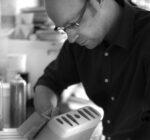
For more than 50 years, within a few modest rooms in an 18th-century silk mill, a small team of people has created 3,418 new products, leading to sales of more than 46 million items around the world. It is said that appearances can be deceptive and nowhere is this truer than at Chipping Campden, a small market town within the Cotswold district of Gloucestershire, western England. Its understated charm is perhaps its greatest attribute, for within its boundaries are the headquarters of Robert Welch Designs, a family-run business with a global reach. The existence of the company at the old mill is the legacy of the man whose name the business carries and it all began in 1955 when, fresh from the Royal College of Art, Robert Welch was looking to set up a studio somewhere between his parents’ home in Malvern and London, where he might find work. He rented a small room in the Old Silk Mill in Chipping Campden and installed his drawing board and a truckle bed. It was an inauspicious start for a man whose strong design principles would later lead to him being appointed a Royal Designer for Industry, and MBE – a Member of the Order of the British Empire, bestowed by the Queen in recognition of his work. Welch trained as a silversmith at Birmingham College of Art before moving to the Royal College of Art in 1952 where he specialised exclusively in stainless steel production design. In 1965 he was honoured as a Royal Designer for Industry by the British Royal Society of Arts. Being an enthusiastic cricketer, he believed in the close working efficiency of small teams, and therefore called on the complementary skills of designers, prototype makers and manufacturers to help realise his designs. Unlike other design companies, none […]
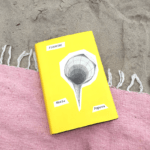
Figuring, by Maria Popova, publisher of Brain Pickings, explores the complexities of love and the human search for truth and meaning through the interconnected lives of several historical figures across four centuries – beginning with the astronomer Johannes Kepler, who discovered the laws of planetary motion, and ending with the marine biologist and author Rachel Carson, who catalysed the environmental movement. Stretching between these figures is a cast of artists, writers, and scientists – mostly women, mostly queer – whose public contribution has risen out of their unclassifiable and often heartbreaking private relationships to change the way we understand, experience and appreciate the universe. Among them are the astronomer Maria Mitchell, who paved the way for women in science; the sculptor Harriet Hosmer, who did the same in art; the journalist and literary critic Margaret Fuller, who sparked the feminist movement; and the poet Emily Dickinson. Emanating from these lives are larger questions about the measure of a good life and what it means to leave a lasting mark of betterment on an imperfect world: Are achievement and acclaim enough for happiness? Is genius? Is love? Weaving through the narrative is a set of peripheral figures – Ralph Waldo Emerson, Charles Darwin, Elizabeth Barrett Browning, Herman Melville, Frederick Douglass, Nathaniel Hawthorne and Walt Whitman – and a tapestry of themes spanning music, feminism, the history of science, the rise and decline of religion, and how the intersection of astronomy, poetry and Transcendentalist philosophy fomented the environmental movement.
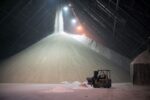
From tobacco to food and fuels, industries use denial, deceit and doubt to corrupt. By Felicity Lawrence. The Triumph of Doubt: Dark Money and the Science of Deception David Michaels Oxford Univ. Press (2020) In 2017, US presidential strategist Kellyanne Conway coined the phrase “alternative facts” to defend false claims about the size of the crowd at Donald Trump’s inauguration. Numerous commentators lamented that we were entering a new era of Orwellian doublethink. These are indeed upside-down times, as epidemiologist and former safety regulator David Michaels demonstrates in his excoriating account of the corporate denial industry, The Triumph of Doubt. Unwelcome news is automatically rebranded fake news. Inconvenient evidence from independent sources — say, about climate breakdown and fossil fuels, or air pollution and diesel emissions — is labelled junk science and countered with rigged studies claiming to be sound. But it would be wrong to see truth decay solely as the preserve of today’s populist politicians. Normalizing the production of alternative facts is a project long in the making. Consultancy firms that specialize in defending products from tobacco to industrial chemicals that harm the public and the environment have made a profession of undermining truth for decades. They hire mercenary scientists to fulfil a crucial role as accessories to their misrepresentations. Denial machine Michaels was among the first scientists to identify this denial machine, in his 2008 book Doubt is Their Product. His latest work combines an authoritative synthesis of research on the denial machine published since then with his own new insights gleaned from battles to control the toxic effects of a range of substances. He takes on per- and polyfluoroalkyls, widely used in non-stick coatings, textiles and firefighting foams; the harmful effects of alcohol and sugar; the disputed role of the ubiquitous glyphosate-based pesticides in cancer; and the deadly epidemic of […]

By Bee Wilson If you want to make a roomful of people argue with each other, one of the fastest ways is to express any kind of opinion about “cheap food”. To some, it is perfectly obvious that cheap food is an evil that results in underpaid farmers, degraded land and tortured animals. To others, it is equally obvious that cheap food is the great safeguard that stands between poor people and hunger. To this second group, the attacks on cheap food look suspiciously like “And-where-do-you-shop?” snobbery from those who have never known the anxiety of feeding a family on benefits. But to the first group, most of the so-called cheap food in the world is not as cheap as it seems – the concept ignores the high external costs of industrial agriculture. As so often in heated debates, the two sides are arguing about different things. “Cheap food” has many faces, depending on whether you are a producer or a consumer and also whether you happen to have a shopping list in your hand. Food retailers know that it is an unusual customer who does not look favourably on low prices – or “everyday value” as the supermarket Tesco has it. The same was true in Victorian London, where anyone who wanted to buy a pound of strawberries or some onions or a nice fresh herring for the lowest price would get it from a street seller called a costermonger. The word costermonger derives from a kind of large round apple called a “custard” (not to be confused with the Asian fruit the custard apple), but by 1850, these humble pedlars were selling not just apples but almost any edible item that a Victorian could want, from oysters to gooseberries, and from bloaters (a kind of smoked herring) to […]
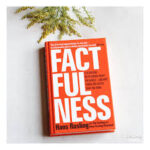
by Hans Rosling, Ola Rosling, Anna Rosling Ronnlund Factfulness:The stress-reducing habit of only carrying opinions for which you have strong supporting facts. When asked simple questions about global trends – why the world’s population is increasing; how many young women go to school; how many of us live in poverty – we systematically get the answers wrong. So wrong that a chimpanzee choosing answers at random will consistently outguess journalists, Nobel laureates, and investment bankers. In Factfulness, Professor of International Health and a man who can make data sing, Hans Rosling, together with his two long-time collaborators Anna and Ola, offers a radical new explanation of why this happens, and reveals the ten instincts that distort our perspective. It turns out that the world, for all its imperfections, is in a much better state than we might think. But when we worry about everything all the time instead of embracing a worldview based on facts, we can lose our ability to focus on the things that threaten us most. Inspiring and revelatory, filled with lively anecdotes and moving stories, Factfulness is an urgent and essential book that will change the way you see the world.

By Zafer Achi and Jennifer Garvey Berger In an unpredictable world, executives should stretch beyond managing the probable. It is only natural to seek certainty, especially in the face of the unknown.Long ago, shamans performed intricate dances to summon rain. It did not matter that any success they enjoyed was random, as long as the tribe felt that its water supply was in capable hands. Nowadays, late nights of number crunching, feasts of modelling, and the familiar rituals of presentations have replaced the rain dances of old. But often, the odds of generating reliable insights are not much better. Perhaps that is because our approach to the hardest problems—and the anxiety those problems create—is fundamentally misdirected. When most of us face a challenge, we typically fall back on our standard operating procedures. Call this “managing the probable.” In much of our education, and in many of our formative experiences, we have learned that some simple problems have one right answer. For more complicated problems, accepted algorithms can help us work out the best answer from among available options. We respond to uncertainty with analysis or leave that analysis to the experienced hands of others. We look for leaders who know the way forward and offer some assurance of predictability. This way of approaching situations involves a whole suite of routines grounded in a mind-set of clarity if not outright certainty. To that end, they are characterized by sharp-edged questions intended to narrow our focus:What is the expected return on this investment? What is the three-year plan for this venture? At what cost are they willing to settle? But asking these kinds of questions, very often legitimate in business-as-usual settings, may constrain management teams in atypical, complex situations, such as responding to a quickly changing market or revitalizing a privatised utility’s culture. […]